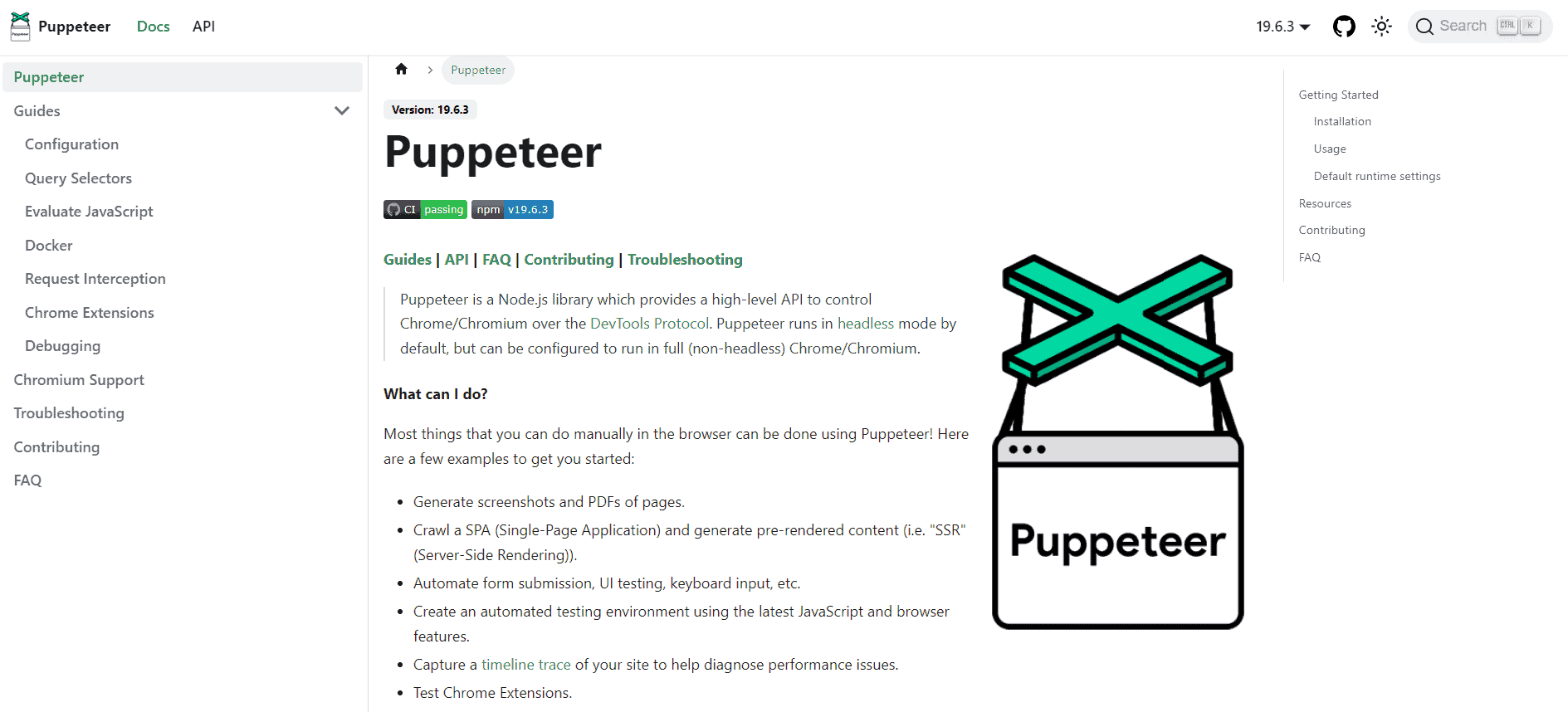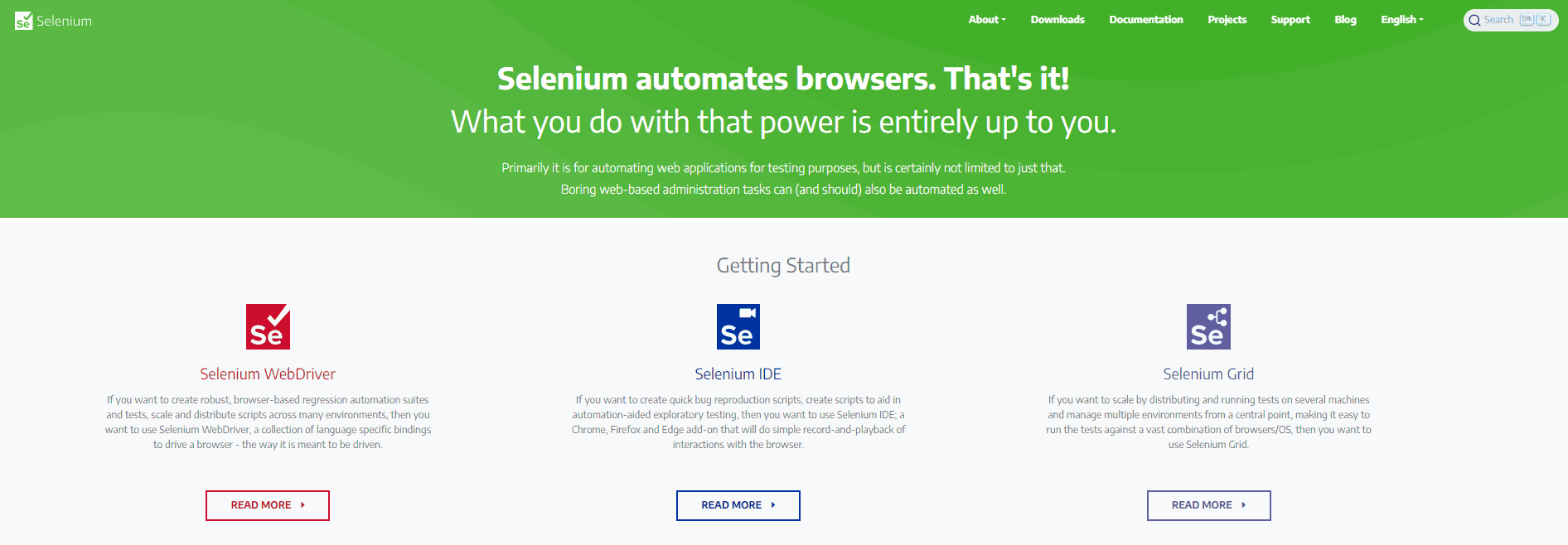Puppeteer vs Selenium: Which One to Use?
We compare two popular headless browser libraries.

When it comes to web scraping JavaScript-rendered websites, Puppeteer and Selenium are usually the names that pop-up. Both tools control a headless browser and are fully capable of dealing with dynamic pages.
But if you’re new to web scraping or simply haven’t tried using headless browsers yet, you might wonder which one will work better for your project. This guide gives a quick overview of what each tool can do and when it’s best to use it. If you’re short on time, you can skip straight to the comparison table at the end.
Puppeteer – Fast and User-Friendly Tool

Puppeteer is a Node.js library for controlling a headless Chrome browser. The tool was developed by a team at Google in 2018. Even though it’s relatively new in the field, Puppeteer is a great performer.
The library is backed up by Chromium developers, so you’ll always have the latest browser version and features. But it supports only Chrome and Chromium, so if you’re not planning to use other browsers, Puppeteer might be what you need.
The tool can fully automate most browser interactions like moving the mouse, filling out forms, waiting for the page to load, and taking screenshots or getting the page in PDF. Among all the functionalities, you can integrate proxies with Puppeteer.
Like other web scraping tools, Puppeteer has its own tricks to make you look like a real user. It includes plugins like puppeteer-extra-plugin-stealth or puppeteer-extra-plugin-anonymize-ua which will help you spoof your digital fingerprint. Some plugins rotate your user agent or headers, while others remove minute variation between headless Chrome and a real Chrome browser.
In terms of speed, Puppeteer is much faster than Selenium. It uses Chromium’s built-in DevTools Protocol, allowing you to control the browser directly. The library is relatively light on resources and has a fast execution time.
Puppeteer is easy to use. Unlike Selenium, it doesn‘t have a built-in Integrated Development Environment (IDE) for writing scripts, so you can interact with the website using an IDE of your choice. That means you’ll have to write less code. Also, the installation process is simple – you’ll only need to install npm or yarn package managers and download the package.
Puppeteer has well-organized documentation, making it a great choice for beginners. It has a growing community, so you won’t lack answers on various forums like StackOverflow.
In a nutshell, Puppeteer is a beginner-friendly tool, which is light on resources and very well-maintained. It includes all the necessary plugins to avoid fingerprint-based detection. However, it’s only bundled with Chromium.
Selenium – Versatile Tool for Advanced Users

Selenium, launched in 2004, is a veteran in the industry. It’s a collection of open-source tools primarily used for web testing and browser automation. But with the growing popularity of JavaScript, web scrapers found its strength in dealing with dynamic websites.
Selenium offers a way to control headless browsers programmatically. It can take screenshots, and otherwise interact with the page. Simply put, Selenium opens and goes to your target webpage. In the meantime, it imitates human behavior, so you’re less likely to get red-flagged by your target site as a bot. Also, Selenium supports proxy integration, which increases your chances of getting more successful requests.
Like Puppeteer, Selenium has its own packages like selenium-stealth to prevent fingerprint detection. Properly configured, it can pass bot tests, deal with Google account logins and reCAPTCHAs.
One of Selenium’s biggest advantages is that it can emulate all major browsers like Chrome, Firefox, and Microsoft Edge. So, if your scraper doesn’t perform well with your chosen browser, you can always try another one. It’s also flexible in terms of programming languages – the tool runs on Java, Python, C#, Ruby, JavaScript, and more.
You’ll need to install a web driver to control a headless browser with Selenium. This significantly reduces speed and takes up a lot of resources. So, compared to Puppeteer, the library is slower and more demanding.
What’s more, Selenium has a steep learning curve. First and foremost, it wasn’t built for web scraping purposes, so it’s harder to use the tool. This makes the library a less attractive choice for beginners.
Though some consider it outdated, Selenium is still very popular, so you won’t lack community support. You can find many discussions on platforms like StackOverflow and step-by-step tutorials on how to use the library.
All in all, you should stick to Selenium if you want to use other browsers rather than Chrome, or if you’re uncomfortable working with the Node.js language. Otherwise, it’s heavy on resources and hard to use.
Comparing Selenium vs Puppeteer
Here’s a brief table that shows the main features of Puppeteer vs Selenium side by side:
| Puppeteer | Selenium | |
| Year | 2018 | 2004 |
| Supported programming languages | Node.js | Java, Python, C#, Ruby, JavaScript, Selenese, Kotlin |
| Supported browsers | Chrome | Chrome, Firefox, Internet Explorer, Edge, Opera |
| Performance | Fast | Slow |
| Difficulty setting up | Easy | Hard |
| Ability to generate PDF | Yes | No |
| Supported operating systems | Windows, Linux, macOS | Windows, Linux, macOS |
| Proxy integration | Yes | Yes |
| Best for | Small to large-sized projects | Small to medium-sized projects |